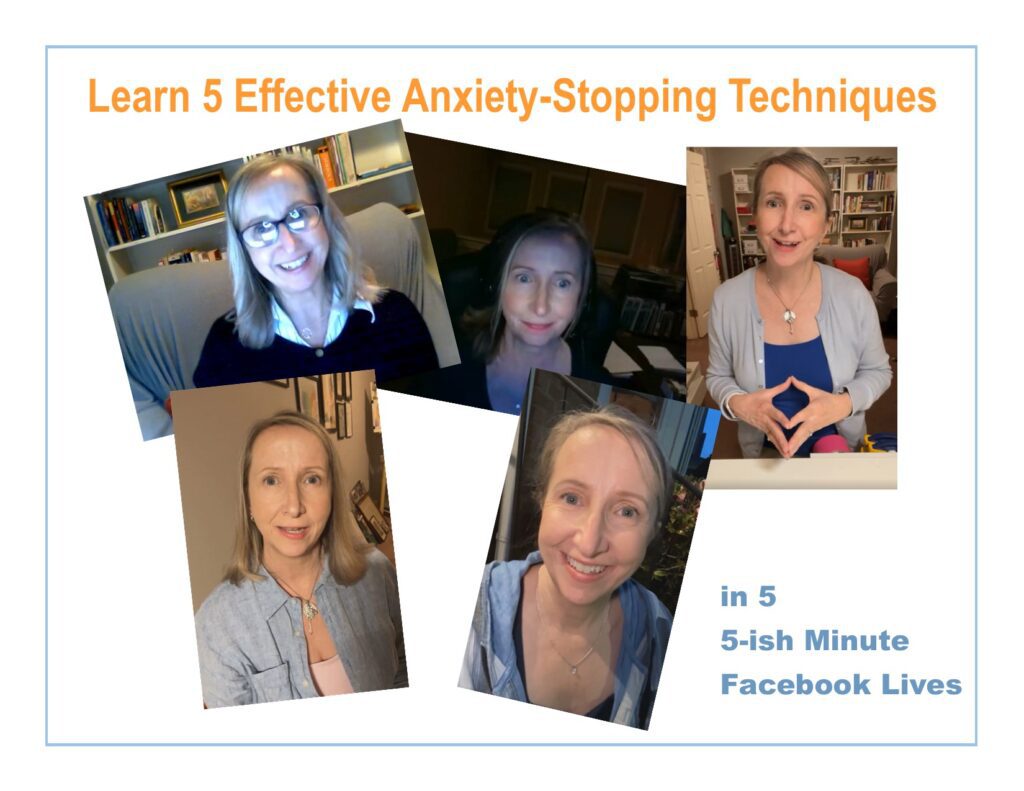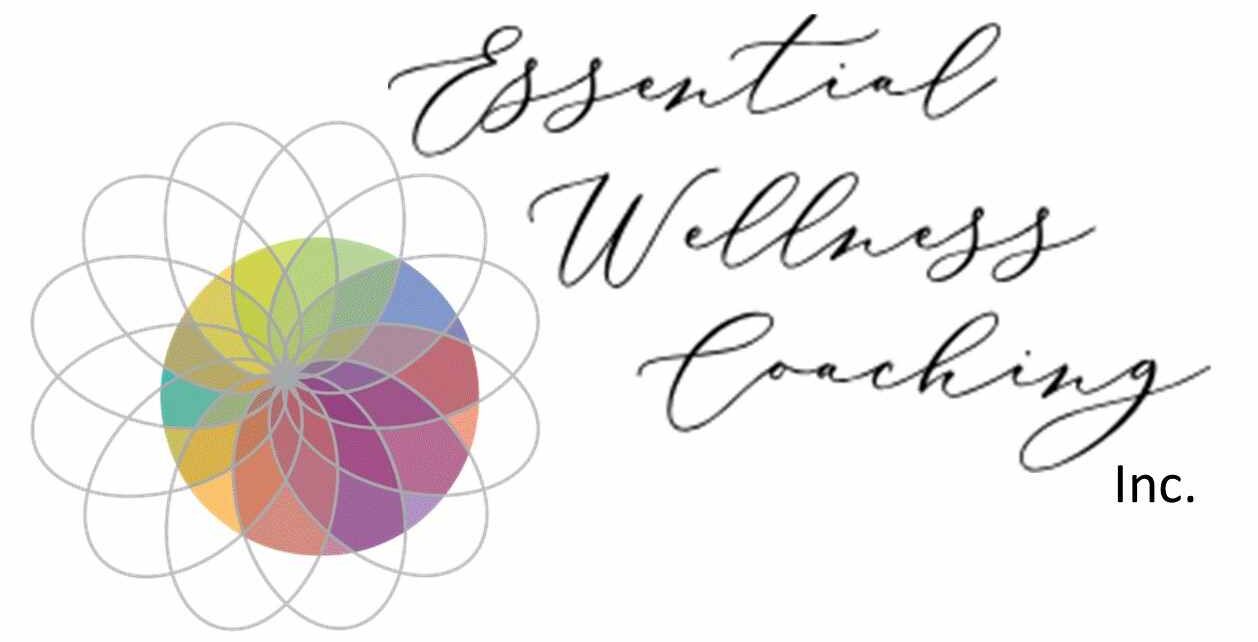5 Tips for Taming Anxiety: Cuz you can’t THINK your way out of anxiety
In our recent blog, “You Can’t Think Your Way Out of Anxiety – How to Wrestle Your Lizard,” we established that the limbic brain (a.k.a. Lizard Brain) does not respond to language: self-talk, affirmations, intentions, logic, or reason. In other words, you cannot think your way out of anxiety.
Still, you do not have to be held hostage by this powerful-but-nervous lizard! You can take control of your emotional response with effective, simple, science-based techniques that you’ll looooooove doing anytime, anywhere. Empower yourself with 5 powerful techniques for overcoming anxiety in a short series of videos available on our YouTube channel or read the descriptions of these techniques offered here.

The main take-aways are these:
- Anxiety is normal, widespread, and unavoidable.
- Anxiety does not respond to verbally-based mitigations.
- Anxiety can be easily resolved by non-verbal techniques.
Include a couple of these techniques in your self-care repertoire: GAME CHANGER!
The One Thing
The one thing—the only thing—that will address the triggered limbic brain is EMOTION. As much as I value positive self-talk, affirmations, intention and journaling, they won’t work to calm anxiety. The amygdala is pre-verbal; it doesn’t reason. Arguing with it can even cause it to clamp down on its fears, clutching them more tightly, and sending your body into deeper alarm.
In order to take this information from academic to application, it’s important you become familiar with what a triggered amygdala feels like for you. Start to notice, what emotions precede a fight/flight/freeze event? What signals does your body send you that the amygdala is taking over? Your body is always speaking to you—learn its language.
Notice what events hijack your amygdala. Here are three types of amygdala triggers to look for:
- Modern environments – the amygdala is meant to protect us from saber tooth tigers, not the constant onslaught of modern stimuli, like traffic, work and family pressures, digital overload, and a 24-hour news cycle. Remember, telling your amygdala that these stimuli are not threatening will not work; it doesn’t reason.
- Trauma residue – past trauma leaves a sort of scar tissue on the psyche that distorts the response of the amygdala. Any violence or abuse you have suffered, or accidents or injuries, can put the amygdala on high-alert for a repeat of these assaults, causing it to over-react to similar, but unrelated, triggers. BTW, this includes a global pandemic! Also, there is evidence that ancestral traumas are carried in our DNA and impact the brain’s limbic response.
- Chronic, low-level triggers – these are hard to see because you are conditioned to them. It could include a loud or dangerous work site, a volatile household, or your Facebook feed. Because we become numb to these triggers, look for their effects on your body: difficulty sleeping, weight gain around the middle (from cortisol), increase in numbing behaviors (alcohol or drug use, zoning out on tv), weight loss or gain.
Your assignment: for next 24 hours, observe your triggers and your response. Do this with great self-compassion. There is nothing “WRONG” with you.
HeartMath Technique
You can employ your heart to take over a hijacked amygdala. This works because…
- The heart is a pump. Its constant movement generates measurable electro-magnetic energy. It physically interacts and senses its environment.
- The heart sends signals to the brain. In the heart-brain network, more messages are sent from Heart to Brain than the other way around.
- We use this heart-brain relationship to signal the brain to cease and desist.
Here is a HeartMath technique (HeartMath Institute), called Heart Centered Breathing. It can be done anywhere, at any time. It brings your body’s major systems—heart, respiration, and brain—into energetic coherence to reverse the surge of alarm chemistry that your amygdala spewed into your bloodstream.
I take you through the experience in this video, and I’ll describe it here:
- Connect to your heartbeat. Sense its rhythm inside you. “See” it.
- Imagine breathing into the area of your heart with deep, slow inhales, followed by smooth, slower exhales, while keeping the connection with your heart.
- Once you’ve got the heart/breath rhythm flowing easily, conjure a happy thought: imagine a person, place or event that makes you happy. Really relive it. Experience it fully in your imagination. Let it bring a smile to your face.
- Hold the heartbeat, breath, and positive memory for about 5 minutes. You will feel a shift in that time.
Essential Oils Technique
This approach settles a triggered amygdala by sneaking up on it. Here’s how it works: Your brain is always taking in information through your five senses. Four of those senses are processed by your rational brain. One of those senses—smell—is processed by the limbic brain. This explains why a smell evokes memories.
Essential oils can be used very effectively to sort of snap the lizard brain out of its anxiety fit. A bottle of pure essential oil contains thousands of pounds of plant material, concentrated, so that the natural healing and balancing properties of these plants bathes the amygdala. For this to work, your oil must be 100% pure. I trust only Young Living. Anything synthetic or adulterated assaults the amygdala and sends it back into alarm state, defeating the purpose.
How do you use essential oils to tame an anxiety attack? Here are three ways:
- Just grab a bottle, open it, and sniff. This is what I do most often.
- For more covert use during meetings or Zoom calls, place a drop on the back of your hand or on your notepad, and sniff unnoticed.
- Perform a full-shift aromatherapy moment.
How do you know what oil to use? Don’t think too hard. Follow your instinct. Knowing the 5 general groups may help:
- Resins elevate the mind. They are considered spiritual oils (ex. Myrrh, Frankincense)
- Woods are grounding (ex. Cedar, Pala Santo, Fir, Cypress)
- The leaves and stems of Herbaceous plants are comforting, nurturing (ex. Basil, Eucalyptus, Peppermint)
- Flowers evoke feelings of love and joy (ex. Ylang ylang, Jasmine, Rose Lavender)
- Citrus make you feel happy (ex. Orange, Lemon)
“5-4-3-2-1” Technique
While this game can be played anywhere, it is extra effective in taming the amygdala if you combine it with a change of environment. Go outside if you can. Take a walk while you engage the senses in a game of 5-4-3-2-1. Here’s how you play (watch the video):
- As you begin your walk, identify a visual target for your eyes to seek 5 of. It can be as easy or as hard as you want (or as time will allow). For example: find 5 red things, or 5 mailboxes, or 5 people with striped shirts.
- Next, allow your ears to notice 4 distinct sounds,
- Then, feel 3 different sensations on your skin.
- Then, seek 2 scents to delight your nose.
- Finally, notice 1 taste in your mouth.
These can be done in any order of sense, as quickly or as slowly as conditions allow. By focusing on your senses, especially if you change your environment and engage the body in a walk, you distract your triggered lizard brain until it can no longer hold its alert pattern.
Binaural Technique
This anti-anxiety approach uses sound to harmonically induce the brain into a relaxed state. While all of these techniques are adaptable to fit your situation, this one is less so, because you must wear headphones. Select a headset, earbuds or airpods that allow you to be comfortable while you relax, walk, exercise, or work on the computer. Just don’t do this one while driving.
Here’s how it works (also explained in this video). You hear two tones, one in each ear, that are slightly different in frequency, forcing your brain to reconcile the difference. Here’s an example:
You hear a sound in your left ear at a frequency of 130 Hertz (Hz). And in your right ear, you’re listening to a sound at a frequency of 120 Hz. Your brain, however, gradually falls into synchrony with the difference — or 10 Hz.
The tones must be listened to separately, one through each ear. This is why you must wear headset. Depending on the difference in tone in each ear, your brain synchronizes with one of these brainwave states:
- Delta (0.1-4 Hz) – deep sleep, pain relief
- Theta (4-8 Hz)– REM sleep, deep relaxation, meditation
- Alpha (8-14 Hz)– relaxed focus, stress reduction, flow state. This is what you want for addressing anxiety.
- Beta (14-30 Hz) – focus, problem-solving
- Gamma (30-100 Hz) – peak awareness, transcendental states (binaural beats may not be able to achieve this high frequency)
Binaural beats are easy to use, natural and 100% safe. Binaural beats have been connected to these potential health benefits:
- reduce anxiety
- increase focus and concentration
- lower stress
- increase relaxation
- foster positive moods
- promote creativity
- help manage pain
Where can you find binaural music?
- Do an internet search for binaural beats websites (example: www.gaiameditation.com)
- YouTube – choose only reputable providers since you are making your suggestable subconscious available to them
- Amazon, Amazon Prime
- Insight Timer app – my favorite!
Because binaural beats can be used to induce anything on the range of deep sleep to high-alertness, be sure to look specifically for anxiety reduction, relaxation, stress reduction, or something around 8 – 10 Hz.
Summary
It all begins with knowing your own body, and learning to pay attention to when and how you experience anxiety. Knowing that we can’t think our way out of anxiety, all of these techniques impact the brain’s emotional center, the Amygdala, non-rationally, non-verbally; no thinking involved! These techniques produce a profound bio-chemical shift in only 5-ish minutes, empowering you to release the lizard’s grip on your life and reclaim your health and happiness.
P.S. A Note about Weed
Marijuana is getting a lot of press right now as a remedy for anxiety. More than half U.S. states have legalized it (medically and/or recreationally), now including my home state of Virginia. Will pot work for you? Consider this…
Weed is used for its two major constituents: THC & CBD. THC will get you high, but short-term side effects include increased heart rate, increased anxiety, hallucinations, dizziness and paranoia. Regular use over weeks and months can lead to withdrawal symptoms, depression, anxiety, or prolonged paranoia. Also, THC use can negatively impact brain development in people until their late 20s. THC is NOT useful in addressing anxiety; it can actually make it worse. It should be noted that modern marijuana products are not natural. They are manipulated in laboratories to contain up to 10 times the natural occurring levels of THC.
CBD, on the other hand, has some anti-anxiety and anti-inflammatory properties, and/but it does not get you high. Therefore, if you’re wanting to manage anxiety, marijuana is likely to make it worse, although CBD products may provide some relief.

Leave a Reply